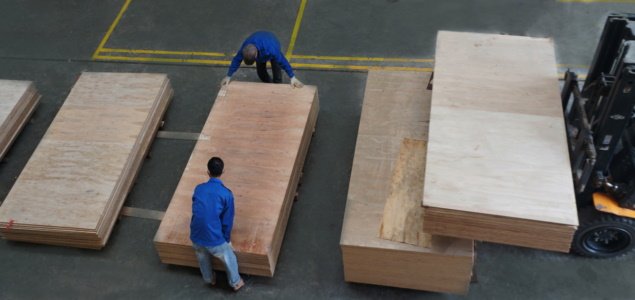In the wake of a robust October, the US hardwood plywood industry experienced a notable downturn, with November witnessing a 14% decline in imports. Despite this dip, the volume of plywood brought into the country in November, totaling 275,890 cubic meters, marked a substantial 25% increase compared to the same period in 2022. This shift reflects a dynamic landscape in the industry, with changes in trade patterns and a diversification of sources for hardwood plywood.

Diverse Declines from Major Trading Partners:
The decline in hardwood plywood imports extended across major trading partners, with Indonesia experiencing a 31% drop, Russia experiencing a substantial 60% decrease, and Vietnam facing a 7% reduction.
This pattern suggests a broad-based shift in market dynamics as the US explores alternative sources for its hardwood plywood requirements.
Changing Suppliers Landscape:
Throughout the year, there has been a consistent weakening in volume from key suppliers, prompting the US to seek alternatives for hardwood plywood.
Notably, imports from China, Russia, Malaysia, and Vietnam for the year to date are all less than half of their 2022 levels.
This trend underscores a strategic realignment in the sourcing strategies of the US hardwood plywood industry.

Rise of Alternative Suppliers:
In contrast, imports from countries other than the traditional leading suppliers have surged by an impressive 43% for the year so far.
This diversification indicates a willingness within the industry to explore new avenues and adapt to changing market dynamics.
The shift to alternative sources is not merely a reaction to a decline in major suppliers but also a proactive strategy to ensure a stable and diverse supply chain.
Year-to-Date Overview:
As we await December’s data to complete the annual picture, it is evident that the total US hardwood plywood imports are down by a substantial 30% compared to the same period in 2022 through November.
This downturn reflects the intricate balance between traditional suppliers and emerging markets, emphasizing the need for adaptability in the face of evolving global trade scenarios.
The fluctuations in US hardwood plywood imports throughout the year highlight the industry’s resilience and capacity to adapt to changing circumstances.
The shift away from reliance on specific trading partners towards a more diversified supply chain underscores the importance of flexibility and strategic planning.
As the year concludes, stakeholders in the hardwood plywood sector will be closely monitoring these trends, preparing for potential shifts, and embracing the opportunities presented by a dynamic and evolving marketplace.
Source: Fordaq.com




